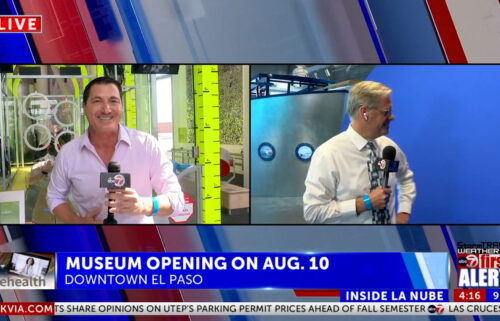On 11-mile construction site, a bridge rises
Click here for updates on this story
LINCOLN, Nebraska (Lincoln Journal Star) — The state’s South Beltway bid request landed on his desk like a 4,000-page set of assembly instructions.
And they were unfinished.
Alan Hayes and others at Hawkins Construction knew what the Nebraska Department of Transportation ultimately wanted — an 11-mile line on the map through former fields and farmyards south of Lincoln, giving east-west travelers unencumbered passage between Nebraska 2 and Interstate 80.
But the state needed Hawkins — and any other contractor interested in drawing that line — to fill in the blanks.
What would it take? How much would it cost?
Hayes, a Hawkins project manager, had an idea of what the company was in for. The state had been talking about building a beltway for decades, and before it released its final specifications and standards in October 2019, it had revealed preliminary plans, and then revised preliminary plans.
The scope of the project was unprecedented: 77 total lane miles; five interchanges; and 21 bridges, including the beltway’s most prominent piece — a nearly half-mile-long flyover, soaring up to 65 feet over U.S. 77 south of Saltillo Road.
Hawkins officials spent two months crunching final numbers to respond to the request’s deadline.
The calculations were staggering. They’d have to move 5.3 million cubic yards of earth. They’d need more than 8,000 tons of steel rebar and girders. They would pour nearly 830,000 square yards of concrete. They’d have to have traffic flowing freely in three years.
And it would cost $352 million.
“I was working on it every hour I was working for those two months,” Hayes said. “We started preparing as a company for taking on a job this big, because a job this big has never been done in Nebraska.”
Record cost, short deadline
There is a line in the earth now, more than a year after they broke ground.
It stretches from the far-east edge of Lincoln, near Nebraska 2 and South 120th Street, to just beyond the city’s southwestern corner, near U.S. 77 and Saltillo Road.
The land has been cut, scraped, stockpiled, heaped, hauled and roughly reshaped into the form of a dusty, four-lane highway. Entire hills disappeared from one side of the route and reappeared on the other.
“Big picture-wise, the first year, 2020, the main thing we needed to get done was as much earthwork as we possibly could,” Hayes said.
So at one point last summer, as many as 100 dump trucks were running up and down Saltillo Road, hauling dirt from where it wasn’t needed to where it was, said Curt Mueting, the state’s District 1 construction engineer.
Now much of that construction traffic has shifted to the beltway’s bumpy path itself, with trails of dust kicked up by dozers and dump and water trucks and state workers and a fleet of yellow Hawkins pickups.
On average, about 200 builders from Hawkins and its nearly dozen subcontractors are on site at any given time, spread out across the beltway’s 11-mile footprint.
On the east side last week, for example, a crew of eight was tying in the last lengths of rebar on a bridge near 98th Street and Saltillo Road, just days from covering it all in concrete.
Near the middle, another crew was working on the 68th Street interchange, racing the clock to get the road to Hickman reopened next month.
The state has fast-tracked the entire project. Normally, a job this size would take up to seven years to finish, said Mike Owen, the state’s design manager.
And originally, the state envisioned building the beltway in three phases, each taking a couple of years to complete. But it scrapped that idea and gave the winning contractor three years to get the east-west lanes open, and another year to finish the interchanges and related work.
A partial beltway would be useless, Owen said.
“There’s really no benefit until we get traffic on it. That’s why we put it all together. We want to build it as a single project and build it all in three years.”
That changed things. It required more oversight. On a typical project, the state might put a project manager and three inspectors on site, Mueting said. But more than two dozen state employees report for work daily on the South Beltway — monitoring all of the separate job sites and keeping track of the big picture.
Please note: This content carries a strict local market embargo. If you share the same market as the contributor of this article, you may not use it on any platform.




